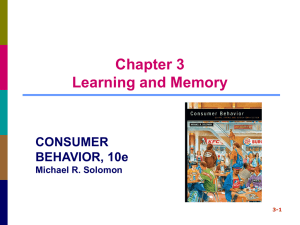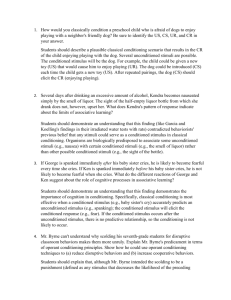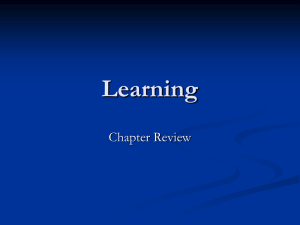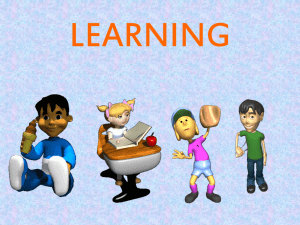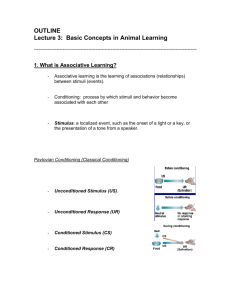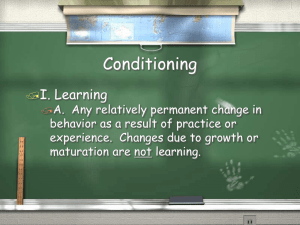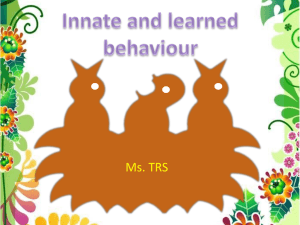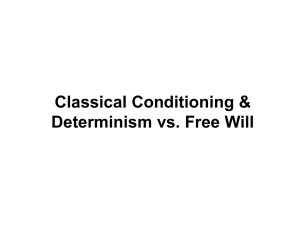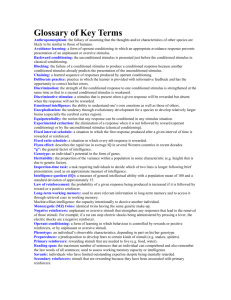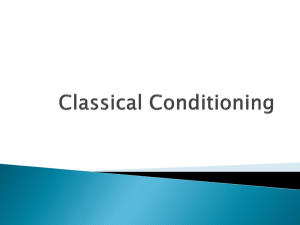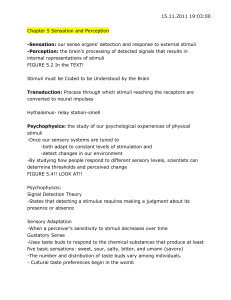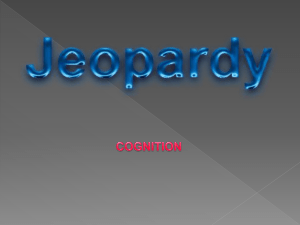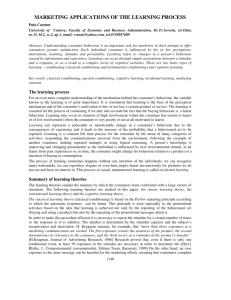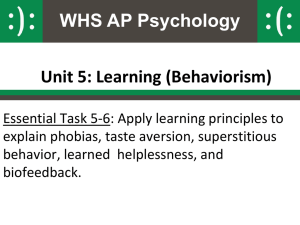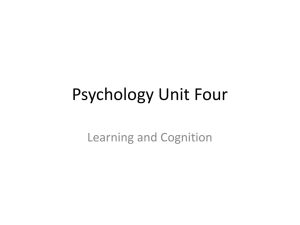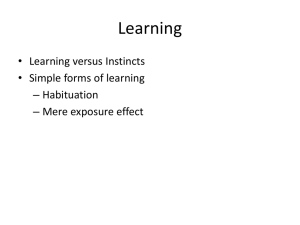Chapter 5. Associative learning and unlearning
advertisement
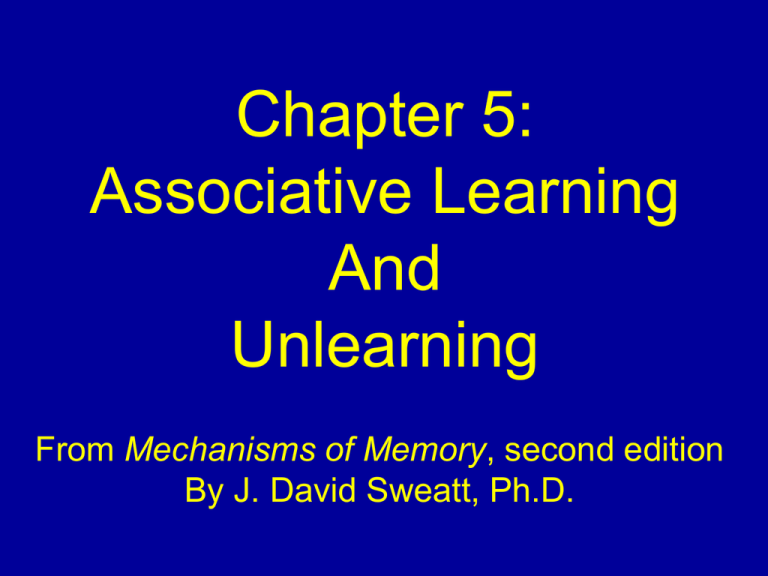
Chapter 5: Associative Learning And Unlearning From Mechanisms of Memory, second edition By J. David Sweatt, Ph.D. Purkinje Neuron Chapter 5 Subdivisions of Human Memory HUMAN MEMORY DECLARATIVE (EXPLICIT) FACTS NONDECLARATIVE (IMPLICIT) EVENTS PROCEDURAL (SKILLS AND HABITS) PRIMING SIMPLE CLASSICAL CONDITIONING NONASSOCIATIVE LEARNING EMOTIONAL SKELETAL RESPONSES MUSCULATURE MEDIAL TEMPORAL LOBE STRIATUM NEOCORTEX AMYGDALA CEREBELLUM REFLEX PATHWAYS Milner B, Squire LR, Kandel ER: "Cognitive neuroscience and the study of memory". Neuron 1998, 20:445-468. Terminology of Associative Conditioning Figure 1 Stimulus or Response Term Abbreviation Actual Stimulus or Response by the Dog in Pavlov’s Experiments Conditioned Stimulus CS A Ringing Bell Unconditioned Stimulus US Food Unconditioned Response UR Salivation Conditioned Response CR Salivation Pavlov and one of his Dogs Figure 2 Nonsocial and Social Fear Learning in Humans Figure 3 Fear Learning in Human Amygdala Figure 4 Anatomy of the Fear System Figure 5 Short-term Memory Long-term Memory Working Memory Action Potential Firing Sustained Neural Circuit Activity Figure 8 Persisting Molecular and Cellular Changes Changes in Synaptic Structure Anatomical Circuit Alterations Terje Lomo and Tim Bliss 1969 Figure 6 2003 Long-term Potentiation in the Amygdala Figure 7 Variations of Fear Conditioning A. Cue-plus-contextual Fear Conditioning B. Context Alone Conditioning TRAINING CUED TEST C. CONTEXTUAL TEST Context Discrimination TEST TRAINING TRAINING CONTEXTUAL TEST Context 1 Context 2 Context 1 Principal Circuit of the Amygdala Tone CS A u d itory C ortex A ud itory T halamus/ M ed ial G eniculate N ucleus L ateral N ucleus of A mygd ala T halmic inputs C ortical inputs Shock U S C entral N ucleus D efensive R esponses Principal circuit of the Amygdala Tone CS A u d itory C ortex A ud itory T halamus/ M ed ial G eniculate N ucleus L ateral N ucleus of A mygd ala T halmic inputs C ortical inputs Shock U S CS US C entral N ucleus D efensive R esponses Weak Strong CS Paired Activity US Strong Strong Fear Conditioning Results in Poetentiation Figure 9 Effect of Paired/Unpaired Training on CS Figure 10 Eye-blink Conditioning in Rabbits Corneal Air Puff Elicits Eyeblink Response Figure 11 Corneal Air Puff Given with Tone Tone Given Alone Elicits Eyeblink Response Diagram of the Neural Circuit LTD Mossy Fibers Granule Cells Tone (Conditioned Stimulus) Purkinje Neurons Parallel Fibers Climbing Fibers Purkinje Cells Inferior Olivary Complex GABA VIII Nerve Pontine Nuclei Nucleus Interpositus Red Nucleus Facial Nerve Motor Neuron Eyeblink Response Figure 12 Trigeminal (V) Ganglion Corneal Air Puff (Unconditioned Stimulus) Auditory Cue Reward Learning Bar Press = CUED Reward Bar Press = No Reward Figure 13 UNCUED Diagram of the Limbic Corticostriatal Loop Figure 14 CS and US Must Touch Each Other Unmasking of Latent Circuits Increases Or Decreases in Synaptic Strength Can Underlie Memory Honeybee Waggle Dance Blue Box 2 Honeybee PER Blue Box 2 Olfactory Learning in Drosophila-The Fruitfly Blue Box 3 Olfactory Learning in Drosophila-The Fruitfly Hermissenda Image courtesy of Mike Johnson Pavlovian Conditioning in Hermissenda Blue Box 4 The Pond Snail Lymnaea Blue Box 3 A Pigeon in a “Skinner Box” Blue Box 7 Birdbrains Species Pigeon Chicken (hatchling) Canaries, Finches Chickadees, Nutcrackers, Blue Jays Barn Owls Crows Blue Box 8 Behavior Pecking, bar-pressing Instinctive bead-pecking Song learning Seed caching Visual system adaptation Tool making Type of Learning/Memory Operant conditioning Conditioned taste aversion Declarative memory? Language? Spatial memory Motor adaptation learning Motor learning, instrumental learning


